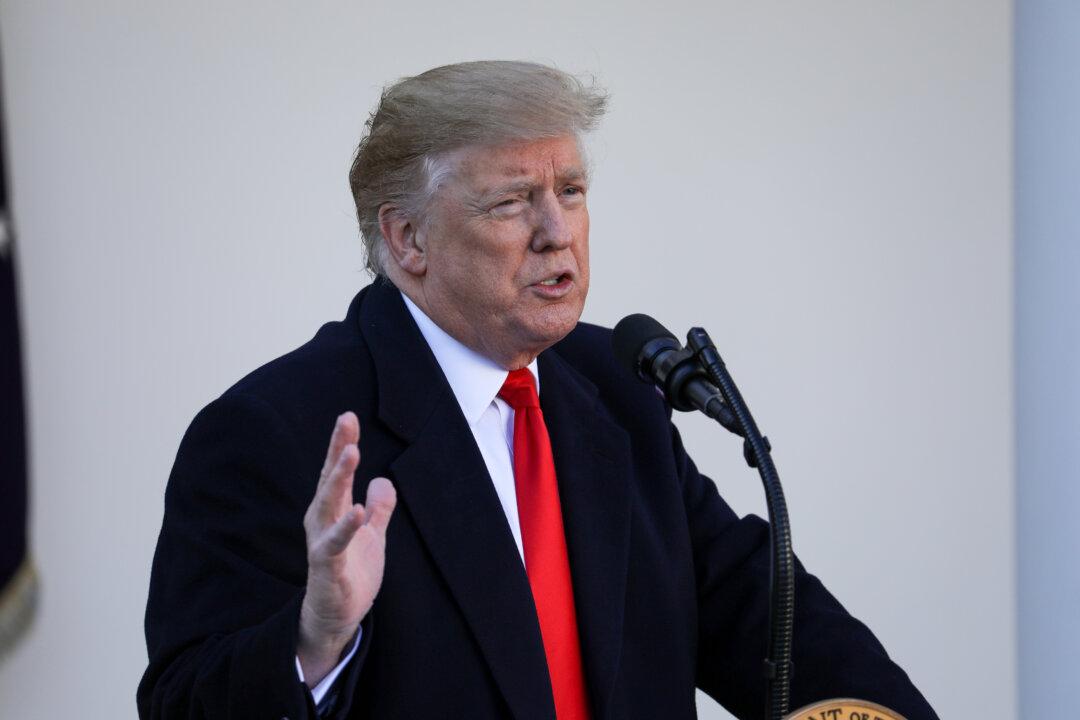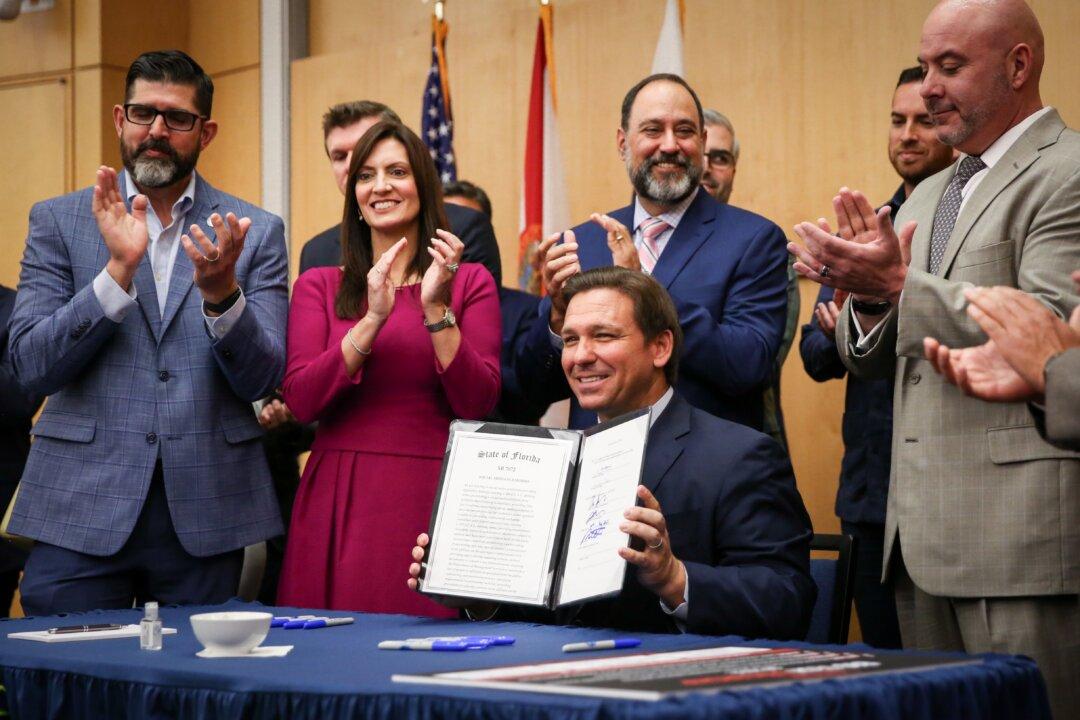UPDATE: The bill passed in the House on Thursday night, securing 300 to 128 votes, and will now head to President Trump’s desk for signing on Friday morning.
President Donald Trump will declare a national emergency to secure funds for the physical barrier along the U.S.–Mexico border, while at the same time, signing legislation to prevent another government shutdown from occurring, the White House said on Feb. 14.





